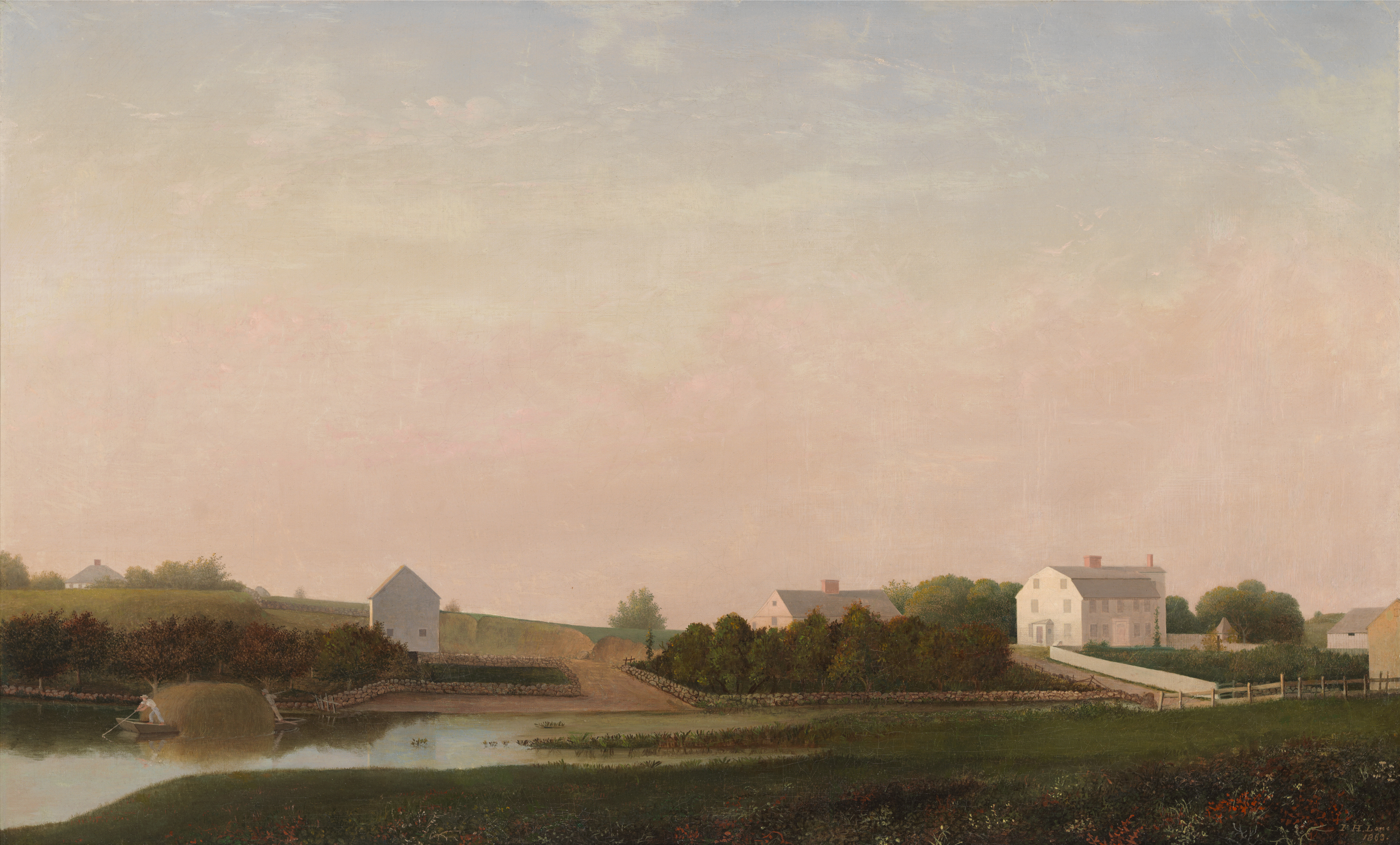An online project under the direction of the CAPE ANN MUSEUM
Lesson plans for teachers
Fitz Henry Lane Online Educational Resources
Farms and Fish: A Closer Look at Cape Ann's Industries
Lesson plan 2A: Grades K-5
 |
Fitz Henry Lane Online Lessons are designed to encourage students to make observations while looking closely at artwork and archival documents, to carry out their own investigations into the nineteenth-century world of an artist and his surroundings, and to foster critical thinking at multiple levels. Lessons were designed with a 30-45 minute timeframe in mind for observation and group discussion. Assessments were designed for completion with the teacher during additional class time or independently at home. |
Purpose
What can a painting tell students about industry in nineteenth-century Gloucester? Fitz Henry Lane lived at a time of growing prosperity for Gloucester and greater Cape Ann. Industries like haying and lumbering were common occupations up and down the coast, but not all communities had access to the dangerous yet lucrative fishing and granite industries. This lesson explores the natural resources in the area and the various Cape Ann industries as depicted in Fitz Henry Lane’s artwork.
Objectives
- Students will identify natural resources in paintings of Gloucester, Massachusetts.
- Students will identify the various industries that make up nineteenth-century Gloucester’s economy as they complete a chart.
- Students will analyze how nineteenth-century Gloucester’s environment influenced its economy by taking a close look at paintings and supporting resources.
Materials
Wall chart of Worksheet 1
Copies of Worksheet 1 for each student (download here)
Copies of Worksheet 3 for each student (download here)
Procedure
Please note: it is recommended that the teacher preview the site including the paintings, interactive features and historical materials for the lesson in advance.
Begin by posing the essential questions: What are natural resources? How do people use natural resources in their businesses? What examples of natural resources can be seen in paintings that tell us what goods and services local businesses and industries provided for the citizens of Gloucester?
Explain to students that they will be thinking about this question as they look at paintings created by Fitz Henry Lane in the nineteenth century. When done, they will be asked to create a drawing with a caption that shows and explains the relationship between natural resources and industry.
Post the teacher-made wall chart of Worksheet 1 with the headings: I see… I think… I wonder… I know… Hand out Worksheet 1 to all of the students.
Access Fitz Henry Lane Online with the class. Pull up Babson and Ellery Houses, Gloucester, 1863 inv. 10.

Babson and Ellery Houses, Gloucester, 1863 (inv. 10)
Have students look closely at the image. Together fill out the chart as they share what they see, think, and wonder about. Record the inventory (inv.) number as you look at each painting. Model how students can learn more about marsh hay and gundalows by using the interactive feature. Specifically read over #1 & #5. Students will fill in the “I know” section after they do this.
Continue this procedure together as time permits for some of the following paintings: Three Master on the Gloucester Railways, 1857 (inv. 29), Gloucester Harbor, 1847 (inv. 23), Gloucester Harbor, 1852 (inv. 38), Fresh Water Cove from Dolliver's Neck, Gloucester, Early 1850s (inv. 45). Use the "Back" button to return to the lesson.
Assessment
Hand out Worksheet 3. Students will create an illustration of a scene from Gloucester and write a caption that describes the scene.
Criteria to include:
- Drawing shows at least 2 examples of natural resources and 2 examples of industry related to them.
- Caption explains the activity in the scene as it relates to resources and industry.
Extension
After closely examining the five paintings and related historical materials, students can use their charts to write a short narrative imagining what it would be like as a boy/girl their age, working in Gloucester during the nineteenth century. Students should introduce their character, develop an experience, show how their character responds to the situation and provide a conclusion to the story.
Standards
National Curriculum Standards for Social Studies
Theme 3. People, Places, and Environment
Students will understand that the theme of people, places and environments involves the study of location, place, and the interactions of people with their surroundings.
Students will understand the physical characteristics of the region and the interactions of people in these places with the environment.
Massachusetts Social Studies Frameworks
3.12 Explain how objects or artifacts of everyday life in the past tell us how ordinary people lived and how everyday life has changed. Draw on the services of the local historical society and local museums as needed. (H, G, E)
3.13 Give examples of goods and services provided by their local businesses and industries. (E)
4th standards Skills & Concepts
6. Define and give examples of natural resources in the United States. (E)
4.11 Describe the climate, major physical features, and major natural resources in each region. (G)
This lesson includes practicing review of social studies standards learned in previous grades.
5.11 Explain the importance of maritime commerce in the development of the economy of colonial Massachusetts, using historical societies and museums as needed. (H, E)
A. The fishing and shipbuilding industries
B. Trans-Atlantic trade
C. The port cities of New Bedford, Newburyport, Gloucester, Salem, and Boston